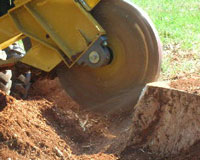Mile High Tree Care offers year-round services for complete care of your outdoor property.
We perform all tree work to the standards of the American National Standards Institute ANSI A300 Tree Care Practices and the National Arborist Association. All work is insured, bonded, and certified. Mile High Tree Care recycles 100% of all debris and never sends any material to a landfill. We stand behind our work. If any service we perform for you does not meet your expectations, please let us know immediately.
Any Time
Tree pruning — trees of all sizes and types
Stump grinding — complete removal to prepare for replacement with a new tree or landscaping
Tree removal — if a tree has died or can’t be saved
Winter
Winter watering — trees and shrubs need water in winter too, especially in near-drought conditions – professionals know how to do it properly
Snow removal — we can be ready to clear your sidewalks and driveway immediately after a snowstorm
Spring
Deep root tree fertilization — all trees can benefit, but especially those covered by impervious surfaces
Planting — shrubs, decorative grasses, perennials, annuals
Summer
Tree Care Service Details
Reasons To Prune a TreeC
Pruning should be a regular part of all tree and shrub maintenance programs. Proper pruning involves the selective removal of plant parts to train young plants; rejuvenate older plants; improve plant appearance, structure and health; control size; create special forms; prevent personal injury and property damage; and influence flowering and fruiting. Make sure MHTC is regularly involved in your pruning needs. Do not try and do this yourself! Call the certified arborist experts!
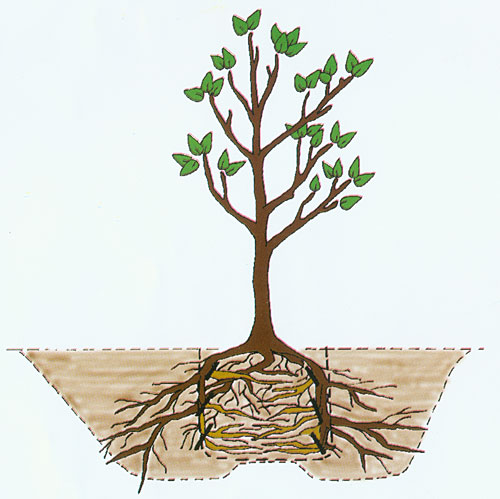 |
Stop circling and girdling roots. Growing plants in containers, or planting them in compacted soils or restrictive sites, may cause roots to circle. As circling roots enlarge they may girdle (choke) the plants, or fail to adequately anchor them. Prune circling roots at planting or when they develop in the landscape (unless removal creates large wounds). |
 |
Remove waterspouts and suckers. Improper pruning and damage may cause plants to produce waterspouts (in the crown) and suckers (from the base or roots). Prune waterspouts and suckers when they appear before their vigorous growth weakens the plants. To fix improperly pruned (topped) trees, remove selected waterspouts to re-establish a better branch structure. |
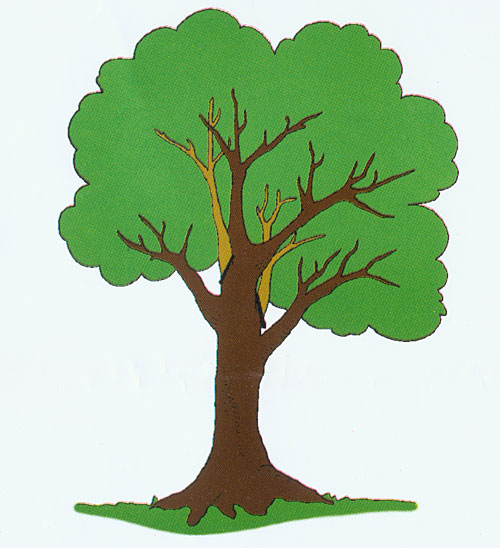 |
Remove co-dominant leaders and weakly-attached branches. Damage, improper pruning, or opposite bud arrangement may cause trees to produce co-dominant (two equal) stems and weakly-attached branches. Prune co-dominant leaders and weakly-attached branches when young to prevent wounds from breakage. In addition, remove rubbing and crossing branches. |
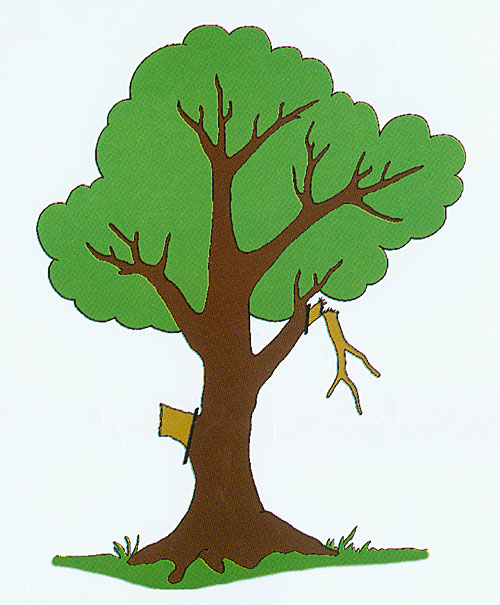 |
Remove damaged branches. Storms, equipment, people, animals and other pests may damage plant branches. Damaged branches diminish appearance, create hazards, and are sites for insect and disease development. Prune when damage occurs. |
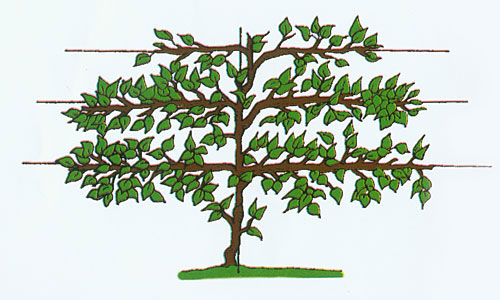 |
Create special effects. Plants can be pruned to create special aesthetic, architectural and environmental forms. Special forms include bonsai (dwarfing), topiaries (three dimensional forms) and espaliers (two dimensional forms). Pollards are plants pruned at the same place each year to restrict plant size. |
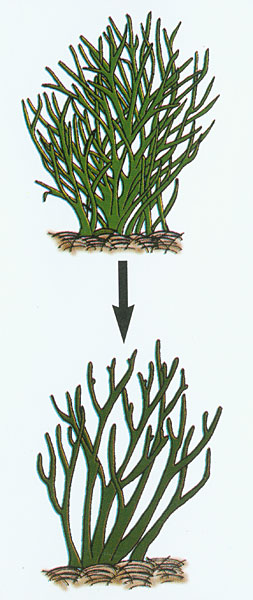 |
Open and rejuvenate older plants. Excessive internal growth often restricts air circulation through older plants, often increasing pest problems and reducing light penetration. Selectively prune to reduce wind resistance, increase air circulation, reduce pest problems and increase light penetration. |
 |
Control size and growth direction. Proper heading (pruning to a bud or side branch) and thinning (pruning entire branches) can control plant size and branch growth directions. Prune to buds or at branch collars, not mid-branch (topping). |
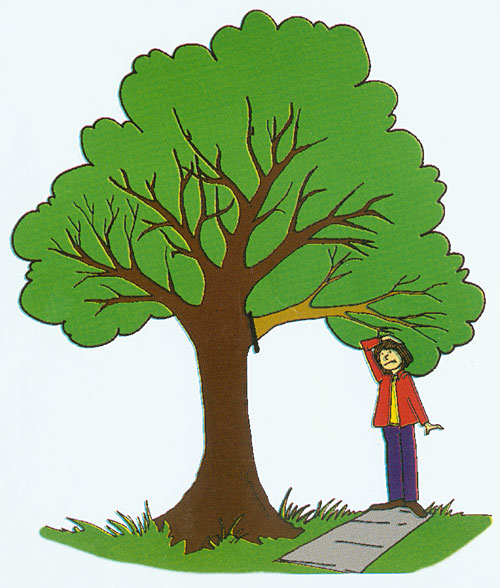 |
Remove potential hazards. Prune branches that interfere with or threaten people and property before problems occur. Monitor plants for potential hazard development. |
| ‘Reasons to Prune’ Courtesy of VA Department of Forestry | |
Why is topping a tree bad?
Starvation
Good pruning practices rarely remove more than one-fourth of the crown, which in turn does not seriously interfere with the ability of a tree’s leafy crown to manufacture food. Topping removes so much of the crown that it upsets an older tree’s well-developed crown-to-root ratio and temporarily cuts off its food-making ability.
Shock
A tree’s crown is like an umbrella that shields much of the tree from the direct rays of the sun. By suddenly removing this protection, the remaining bark tissue is so exposed that scalding may result. There may also be a dramatic effect on neighboring trees and shrubs. If the tree thrives in shade and the shade is removed, poor health or death may result.
Insects and Disease
The large stubs of a topped tree have a difficult time forming callus. The terminal location of these cuts, as well as there large diameter, prevent the tree’s chemically-based natural defense system from doing its job. The stubs are highly vulnerable to insect invasion and the spores of decay fungi. If decay is already present in the limb, opening the limb will speed the spread of the disease.
Weak Limbs
At best, the wood of a new limb that sprouts after a larger limb is truncated is more weakly attached than a limb that develops more normally: If rot exists or develops at the severed end of the limb, the weight of the sprout makes a bad situation even worse.
Rapid New Growth
The goal of topping is usually to control the height and spread of a tree. Actually, it has the opposite effect. The resulting sprouts (often called water sprouts) are far more numerous than normal new growth, and they elongate so rapidly that the tree returns to its original height in a very short time – and with a far denser crown.
Tree Death
Some older trees are more tolerant of topping than others. Beeches, for example, do not sprout readily after severe pruning, and the reduced foliage most surely will lead to death of the tree.
Unsightly
A topped tree is a disfigured tree. Even with its regrowth, it never regains the grace and character of its species. The landscape and the community are robbed of a valuable asset.
Cost
To a worker with a saw, topping a tree is much easier than applying the skill and judgment of good pruning. Therefore, topping may cost less in the short run. However, the true costs of topping are hidden. These costs include reduced property value, the expense of removal and replacement if the tree dies, the loss of other trees and shrubs if they succumb to changed light conditions, the risk of liability from weakened branches, and increased future maintenance.
Stump GrindingC
Stump grinding is the least invasive way of removing unwanted
stumps from your property. Our stump grinding machine fits through any typical 36″ gate and is great for grinding stumps in the middle of your lawn or garden without damaging the surrounding area.
Stumps are ground down below grade to approx 8”-12” major surface roots can be ground out at additional charge.
Our stump grinding machine grinds your unwanted stumps into mulch. The mulch can then be spread over the area or removed from the property.
Reasons for Tree RemovalC
Tree removal is not a service that we like to emphasize, but it is a very necessary part of arboriculture and one that MHTC executes professionally. Removals are performed to eliminate dead and dying trees and those that have become hazardous and cannot be mitigated by other accepted cultural practices. Removals are also done to eliminate competition so the remaining plants have more light and space to develop. Trees are also removed to allow for new construction, building additions, and to provide clearances with those structures.
Tree removal is the most hazardous aspect of arboriculture. Often, tree workers must remove trees growing in confined spaces near homes, utility lines, and other sensitive areas. Tree removal requires considerable experience and training to successfully perform this task.
Cabling / BracingC
Cables and brace rods are supplemental structural supports intended to reduce the risk of failure of weak branches and multiple stems. Cables generally consist of extra high strength steel and are attached to bolts installed in the upper crown of a tree. They are intended to limit the movement of the supported branches so they are less likely to fail during storms. Braces are thread rod that are installed through unions of weak branches and multiple stems to provide more rigid support from torsional (twisting) forces that can occur in violent weather.
Supplemental structural support systems should only be installed based on a thorough inspection and evaluation of tree structure by our certified arborists. Materials and techniques must comply with published industry standards (American National Standards Institute A-300 Standards). If trees have lightning protection systems, the conductor must be attached to any support cables in the crown. Homeowners with supplemental structural support systems should contact MHTC to inspect the system each year.
Deep Root WateringC
Moisture deficiency from drought is the most common stress encountered in the landscape. Usually, this is a temporary condition and has minimal impact on plants. Periodically, drought conditions may persist from several months to years and can significantly affect plant health and survival. New plantings that have not become established and very old plants are most impacted by drought.
Moisture stress adversely impacts virtually every process in the plant including:
- Reduced food (photosynthesis) production
- Reduced growth
- Fine root mortality
- Reduced nutrient absorption
Plants stressed by drought are more susceptible to certain pest problems including boring insects and stem and root disease pathogens. These secondary invaders are often responsible for the ultimate decline and death of the plant.
With drought seemingly becoming more severe and intense along the front range, landscaping with drought tolerant species should be considered whenever possible. Integrating large mulch beds into landscapes help conserve soil moisture and reduce the competition for water from trees, turf, and other ground covers. Proactive plant health care programs like those offered at MHTC are important so if drought and water restrictions develop, plants can better tolerate the resulting stress. During droughts, plants should be monitored closely for pest problems and treatments applied as needed to prevent additional damage.
Deep root watering with a truck mounted high pressure large volume system can supply the proper amount of water deep into the root zone very quickly and efficiently. This allows the water to be place directly where it is needed most. Plus serves to break up hard compacted soils to allow more air and water into the soil long after we have left the job site. Deep root watering can be applied any time through out the year as long as soils are not frozen and day time temps are above 55 degrees.
Storm DamageC
Most damage to property during severe weather events occurs due to falling trees and limbs. High winds and saturated soil conditions typical of summer storms can cause tree roots to fail and branches to weaken. Limbs may be torn free during storms or an entire tree may fall, causing power outages, property damage, and even personal injury. During winter, the weight of ice and snow accumulations causes failure of branches and even entire trees.
While it is impossible to totally protect your trees and property from severe storms, there are some basic procedures that can help reduce the risk of damage. The certified arborists at MHTC can inspect for defects and conditions that could predispose your trees to failure.
In many cases these hazards are not always obvious to the untrained eye and correcting them can be a dangerous job. That’s why before remedial treatments are recommended or any work is performed, a MHTC arborist will fully inspect trees and conduct a more detailed assessment if needed. This could even include a climbing inspection or an analysis of decay that may be present in the branches, stems, or roots.
Based on the outcome of an inspection, MHTC may recommend appropriate treatments such as pruning, installation of supportive cables or braces.. Trees provide beauty and add value to your property so removal should only be considered where high-risk conditions exist that cannot be effectively mitigated.
Never utilize the services of an arborist who proposes topping trees as a solution to storm damage prevention. Topping leads to problems later in the life of the tree and is expressly prohibited by industry standards. Additionally, an arborist should not use climbing spikes when performing maintenance procedures as they create wounds in stems that can lead to insect and disease infestations. These are just two issues you’ll never need worry about when you choose MHTC to handle your tree and shrub care needs.
Deep Root Tree FertilizationC
Does your tree need fertilizer?
To help understand why an urban tree needs fertilizer, let’s compare a tree in your yard to one in the forest. Typically, we give trees planted in a yard much more care than a forest tree. Why?
Let’s first examine the planting site and its parent soil.
The urban tree has been planted in disturbed soil and, in fact, may not have any top soil or organic material at all. Often these soils are wet, with very poor aeration, high in clay content, and very low in coarse materials such as sand or silt.
Meanwhile, out in the forest, the soils have not been disturbed. Leaves drop each year to add a continuing supply or organic material. Microorganisms work to break down leaves and other vegetation into humus and mineral elements. Earthworms mine the soil and aid in soil aeration. There is no construction equipment or foot traffic to compact the soils, drainage has not been interrupted with underground construction, compacted soils or grade changes. Tree roots don’t have to compete with the lawn for water and nutrients.
Its no wonder trees grow so well in the forest!
Thus, it is up to us to take what steps may be necessary to provide the best growing conditions possible for our urban trees, including fertilizing.
The liquid root fertilization process provides the elements essential for healthy, vigorous plant growth. This also increases a tree’s resistance to insect and disease attack. Give your trees and shrubs the tender, loving care they deserve. Put them on a diet of liquid root fertilization.
Deep Root Tree Feeding
In most situations deciduous trees, evergreen trees, and ornamental shrubs planted in a landscaped environment are growing in poor soil. Our front range does not have abundant deposits of rich soils and two to six inches of top soil hauled in to a landscaped environment does not provide enough nutrients for vigorous, healthy trees.
Examples: trees showing not enough fertility have poor color, slow growth, freeze damage, spindly growth in the crown, high death loss of young trees, increased insect activity (bores, aphids, etc.), increase of disease, (especially needle blight on evergreens and canker on deciduous trees) and low fruit production on trees.
Mile High Tree Care mixes the proper amounts of fertilizer and water. This is injected under pressure into the root zone of the trees and ornamental shrubs. We use only high quality, low salt, and slow release fertilizer. One feeding will feed for an entire year. We use a complete fertilizer plus an iron/sulfur supplement.
We recommend fertilizing every year to accomplish the following:
- Increased growth of young trees and shrubs
- Increased winter hardiness and longevity
- Improved color and density of canopy
- Builds a hardier plant to resist & overcome disease & insects
- Increases the livability of young plants less than ten years old
The best time to fertilize is late fall after the leaves have ceased to function and in early spring.
We recommend fertilizing every other year for larger mature, healthy trees and shrubs where growth is not desired.
This will accomplish the following:
- Improve color and density of canopy
- Builds a hardier plant to resist &overcome disease & insects
Unhealthy mature trees and shrubs should be fertilized every year.
Fertilizing trees and shrubs during the mid part of the growing season is recommended only for those plants that are in a decline condition.
Would you like to read more in-depth information about Deep Root Tree Fertilization?
Tree fertilization (in-depth)
Your trees are being fertilized by a totally unique formulation and system. In the natural forest setting trees are slowly fertilized by decomposing leaf litter. In the landscape, leaf litter is removed, therefore removing all natural nutrient recycling and organic matter. Our fertilizers are slow release fertilizers which most closely mimic what occurs in the natural setting only with more accuracy and uniformity.
These formulations contain a slow release nitrogen (the most needed and the most lacking in urban soils) which breaks down with soil microbes over a twelve month growing season and will not leach from the soil.
Phosphorus: a highly refined, low salt source essential for energy transfer and photosynthetic systems within the tree or shrub.
Potassium: again, a highly refined “no salt” source needed for carbohydrate formation, photosynthesis and protein synthesis. Potassium also increases water absorption and frost resistance.
Iron, copper, manganese, and zinc: these secondary elements function primarily as a part of the enzyme system, essential for various energy transfers, assimilation and growth processes in the plant.
Humates: all organic highly decomposed plant and microbe material which adds and stimulates organic activity in the soil. This improves nutrient uptake and water holding capacity. All these elements in combination and applied at the recommended rate constitute the single best application you can do for your trees and shrubs.
Elements above plus the ideal method application: in the urban landscape, soils become compacted and therefore lack oxygen and need aeration. The ideal application for nutrients is soil injection under pressure. You achieve a three-fold purpose: deep root watering, aeration, and fertilization.
It is important to understand that trees and shrubs with good nutrient supplies are more able to withstand the effect of disease, insect infectations, and extreme weather conditions. This is a preventative type application to maintain the vigor of your landscape plants.
For more information on this unique tree fertilization process, contact Mile High Tree Care.
Insect and Disease ControlC
Maple Tree Decline
Mature silver maples trees in the front range area suffer from a composite group of problems contributing to a syndrome of maple tree decline.
Problems stem from soils that are alkaline and also root diseases causing insufficient mining of soil nutrients.
Symptoms of maple tree decline
- Early symptoms are chlorotic appearance of leaves (yellowing)
- As the tree matures over a number of years, the chlorosis increases. Brown spotting takes place on the leaves, scorching and premature leaf drop occurs.
- Trees in the later stages show twig and branch die back
The above symptoms can occur over a 20 to 30 year time frame. Eventually the tree will show enough die back that it will no longer enhance the landscape and would need to be removed.
Treatment for maple tree decline
For a number of years therapeutic treatment only improved the health of the tree to a limited extent. Now mile high tree care can treat your maple tree to reverse the decline.
- Treatment is recommended to be done in the fall (September or October are the most desirable months)
- Treatment will enhance color (make it green)
- Treatment helps relieve summer scorch and other stresses
- Treatment prevents additional die back (it will not revive branches that have previously died back – those should be removed by a skilled arborist)
- Treatment will need to be repeated at one or two year intervals
Mature silver maple trees quite often are the most valuable plant in the landscaped environment providing shade and enhancing the appearance of the property.
For more information on Insect & Disease Control.

